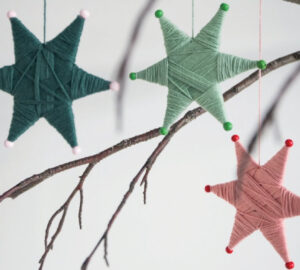Spring is a season of fresh starts, and when it comes to our homes, that often means cleaning … and decluttering. We accumulate a lot without realizing it, and taking the time to clear the objects that don’t get regular use can refresh and renew our spaces. We’ve got some tips to help you clear that clutter so only the best is left.
20/20 Rule
This rule was created by Joshua Fields Millburn and Ryan Nicodemus of The Minimalists—you may know them from their Netflix special. When considering whether or not to get rid of an item, ask yourself two questions: Can I replace this for under $20, and can I do so in less than 20 minutes. Keeping the number 20 in mind means you won’t throw away or donate something you’ll feel too guilty about—after all, it’s easily replaceable. Not everything under $20 necessarily needs to go, just the items you aren’t using regularly.
80/20 Rule
This guideline comes from the idea that we use 20% of what we own 80% of the time. It’s an extension of the Pareto Principle, a mathematical concept that says 80% of outcomes come from 20% of causes. Applying it to decluttering, you can determine what of that unused 80% can be stored or gotten rid of. Plus, while it may seem simpler to keep math out of your cleaning, the rule actually can make tackling your home less daunting. By focusing on cleaning the high-use 20% regularly, you keep your spaces looking tidier between big cleans.
Five Second Rule
No, this isn’t about dropping food on the floor. In decluttering, the five second rule uses the impact of adding a countdown to encourage decision making. You should be able to look at an item and decide within five seconds if you want to keep, donate or throw it away. By putting a time limit on the choice, you are pushed into action. In an alternative version of this rule, you can use the five-second limit to ask yourself the last time you used the item. If you can’t come up with the answer in time, it’s probably a good option to donate or throw away.
12-12-12 Challenge
This decluttering and organizing method was created by Joshua Becker of Becoming Minimalist. It requires you to choose a room or space in your home and then find 12 items to throw away, 12 items to donate and 12 items to return to their proper place. Setting a specific goal to work toward helps you keep focused, while also putting a manageable target on the task. If you don’t know where to start decluttering, try applying this challenge to a room or even just a bookcase. If the number 12 is too daunting at the beginning, start smaller with three or five items in each category, and work from there.
Five a Day Method
This approach is all about being slow and steady. Developed as a personal challenge by Julia Williamson (she even created a blog, Today I Threw Away …, to monitor her progress), the Five a Day method requires you to find five items to throw away or donate every day. You don’t have to stop at five if there is more you want to clear from your home, but every day, you need to have at least five. Rather than relying on bursts of motivation to keep your house decluttered, this is a more committed, ongoing approach.
KonMari Method
Marie Kondo is probably the biggest name in home organization—who hasn’t asked themselves if an item still “sparks joy?” While there is more to her KonMari method of decluttering than we can outline here, some important takeaways include tackling your home all at once to avoid slipping back into bad habits and avoiding storage as a solution, since it simply offers the illusion of decluttering without removing items. Kondo also recommends working by item category instead of location. For example, if you’ve got clothing in a closet, dresser and storage bin, work through it all simultaneously to better take stock of what you have.
The Hanger Test
Clearing out your wardrobe can be a daunting task, but in reality, our old friend the Pareto Principle applies here as well—we wear about 20% of our clothes 80% of the time. Not sure what you wear most often? The hanger test is here to help when it comes to your closet. Turn all the hangers opposite of how you normally hang them. Over six months, whenever you wear an item of clothing, put it back in facing the normal direction. You’ll then be able to see the items of clothing that you don’t wear regularly.








